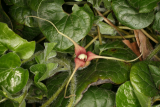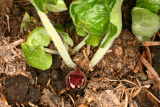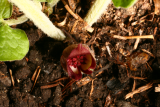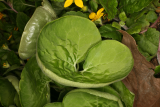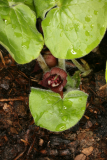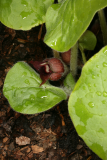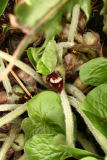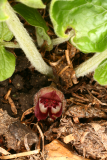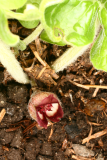Additional notes (click to expand)
Medicinal
Once used by a number of North American tribes for a wide range of ailments. The root has been used to treat chest complaints, asthma, coughs, colds, dropsy, spasms of bowel and stomach, painful menstruation, infantile convulsions. Root harvested in autumn and dried for use. The leaves have been used for wound and inflammation poultices; a decoction or salve for sores. Contains aristolochic acid which is said to have anti-tumour properties.The root and rhizome were boiled in water and the liquid drunk as a contraceptive by one American Indian tribe.
Plants for a Future at www.plantsforafuture.org.uk
Widespread use by Native Americans. Canada used root for heart complaints. Menomini, Meskwaki, Ojibwa, Potawatomi used root to make food palatable. Used for throat, stomach, lung problems and earache. Food seasoning
Austin, Daniel, F. (2004) Florida Ethnobotany. CRC Press.
Other use
Roots have been slightly roasted, ground to a powder and sprinkled onto clothing as a perfume.
Plants for a Future at www.plantsforafuture.org.uk
Toxicity
Leaves can cause contact dermititis in some people.
Plants for a Future at www.plantsforafuture.org.uk
Geographical distribution
- Northern America
Asarum canadense L.
Family: ARISTOLOCHIACEAEGenus: Asarum
Species: canadense L.
Common names: Snakeroot
Distribution summary: North America
Habit: Perennial
Hardiness: H5 - Hardy; cold winter
Habitat: Rich deciduos woodlands, moist, calcareous soils to 1300m
Garden status: Not currently grown
Flowering months: April, May
Reason for growing: Medicinal, other use, toxic

